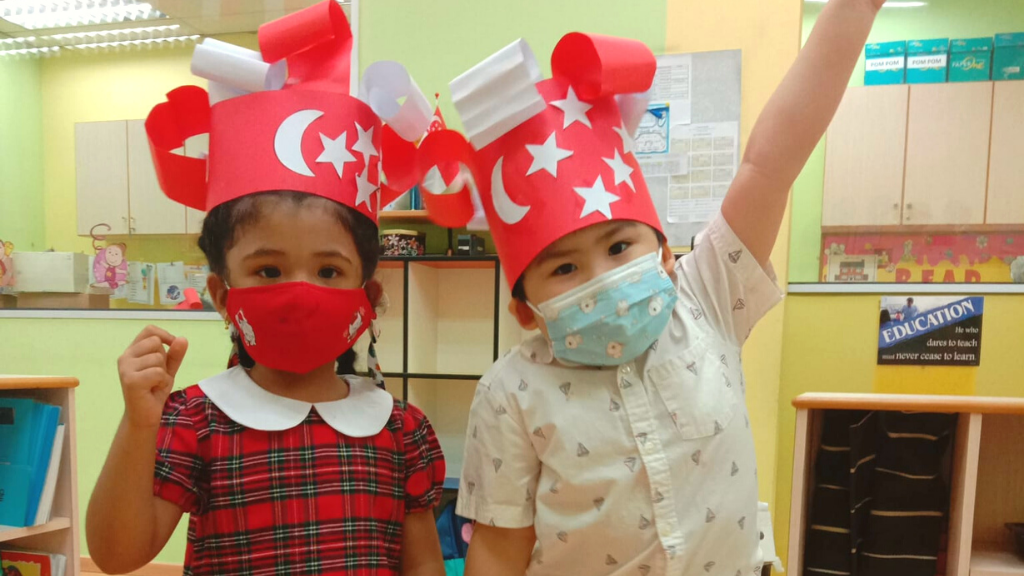Have you ever heard of movement in learning before? Or perhaps you have heard a teacher saying how important it is for children to move as they learn? Well, let us paint you a picture. Imagine sitting in a room by yourself, and suddenly someone from the room next to you started playing the chicken dance song. Now, in this situation, is it possible for you to listen to the whole song without doing the chicken dance?
Our best guess is that you can’t. Because for many of us who learned the dance to this song, our body remembers the dance! This is one example of why movement in learning is essential. Things that we learn with movements tend to stick with us.
Why do we need to move?
You may believe that studying for two to four hours straight can help one absorb all the information in one sitting. But that is not the case. Sitting and studying for hours or days is unhealthy.
Research shows that studying while standing up and taking breaks in between studying greatly benefit one’s body, brain, memories and overall academic performance. So, if you are used to letting your child concentrate for long periods, it is time that you allocate some breaks for them to stand and move around.
More research has shown just how effective movement in learning can be. When information is presented to us in more than one way (visual, auditorial, and kinesthetic), we are more likely to store the information in long-term memory. And using gestures to learn can also help how well we remember the study material.
So, how can we add movement to our child’s studies?
1) Total Physical Response (TPR)
TPR is having children act out gestures to explain a word. The method was first developed in the 1960s to help second-language learners understand new vocabulary terms in their native language. And until today, this method has been used to help learners of any age better understand new words.
To do this, the teacher will have to provide a word, and the children will try their best to act it out using gestures. This way, teachers will know if they truly understand the material.
2) Physical snapshots
Instead of having children verbally explain a concept, physical snapshots allow them to get creative and demonstrate their knowledge by doing something physically. The physical “snapshots” that the children create with their bodies will represent their idea and understanding of the study material. Here is how this method works:
- Children are divided into groups and each group is assigned a concept.
- They are given 20 minutes to plan and practice their “snapshots”.
- They must create a series of physical “snapshots” by silently posing their bodies to demonstrate the concept assigned to them.
- From one “snapshot” to the next, they are required to move silently and fluidly. Similar to that of a comic strip.
For example, if they are assigned to explain how photosynthesis works, they need to create physical “snapshots” to explain this process. Maybe one person can be the sun and another person can be the flower. This activity is done to best showcase their understanding of the subject matter. If they have trouble explaining the concept, then the teacher will have to explain the concept again.
3) Dance
Dancing helps to burn calories, improve balance, and strengthen muscles. But what you may not know is that it also helps to increase cognitive development. Dancing in learning helps children boost creativity, communication, collaboration, and critical thinking. And a bonus point if children can utilise music! Other than dancing in between study breaks or during classes, children can also change the lyrics of a certain song to help them memorise complex formulae or understand difficult concepts.
When integrating movement in lessons, the key is to not overdo it. When there are too many movements involved in one lesson, children can get bored easily and the lesson will be too time-consuming. So if you are studying with your little one, it helps to get your child’s input on whether you should do more or less activities that involve movements. And remember to include large gestures when you explain to your child a new word or concept!
Is your child interested in the field of STEM? Develop their interest with our hands-on and interactive enrichment programmes at Young Engineers Singapore. For more information about our programmes, get in touch with us now or email us at admin@youngengineers.sg.

